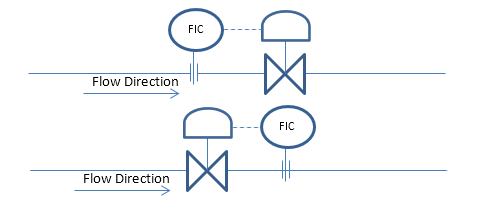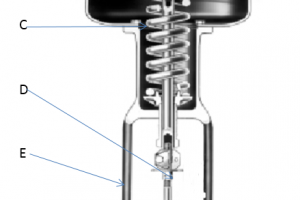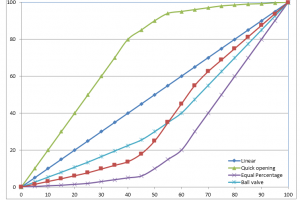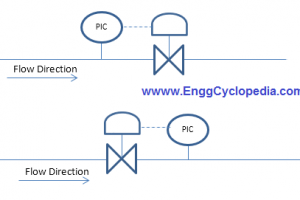Flow control valves are used to maintain the flow rate of a fluid in process industries. Accurate flow control is necessary for the efficient and safe operation. These valve act as adjustable barrier in the system for the precise control over the flow rate.
What is a flow control valve?
Flow control valves are mainly used to maintain the process flow rate in a specified range. Flow is measured and maintained either upstream or downstream of the valve.
Depending on upstream or downstream process requirement, the flow rate is measured by flow element and it send signal to controller. Controller compares the reading and gives inputs to throttle (open or close) the control valve.
Generally flow control valves are found in the inlet of separators, pump discharge line, air inlet of fired heaters, boiler water feed, reflux line of distillation columns, etc.
How do flow control valves work?
Flow control valves are provided with feedback mechanisms in a wide range of process control systems. These mechanisms offer information about the actual downstream flow rate or pressure. This input allows the control system to compare the actual flow to the planned setpoint and make additional changes to maintain precise control. The detailed mechanism is explained here.
- A process controller or control system sends a control signal to the flow control valve. This signal reflects the actual flow rate of the fluid.
- The controller in the control valve compares the actual flow rate with the desired setpoint flow rate.
- The actuator moves the moveable element of the valve to the desired position based on the control signal. To achieve the required flow rate, the valve can be fully open, totally closed, or anything in between.
- When the valve position changes the size of the flow passage changes accordingly. The flow rate will be increased if the valve opens and flow rate will be decreased when the valve closes.
- Thus, the control system continuously monitors and adjusts the valve position based on feedback signals and ensures precise control over flow rate.
The flow control valve interacts with the overall control system, which may include sensors, actuators, controllers, and other components.





